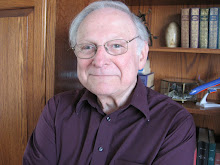 Political
wheels are already getting oiled for the 2016 presidential
bandwagons. Numerous hats have been tossed into the ring, especially on the
Republican side. Does anyone still wear a hat? Not so much, but they still get thrown proverbially into
that ring. Why?
Political
wheels are already getting oiled for the 2016 presidential
bandwagons. Numerous hats have been tossed into the ring, especially on the
Republican side. Does anyone still wear a hat? Not so much, but they still get thrown proverbially into
that ring. Why?Stories vary, and about the only thing they agree upon is that the phrase originated in nineteenth-century America. Most sources trace its origin to the sport of boxing. In the early nineteenth century, almost all men wore a hat or cap of some kind. Early fights were less organized than today’s sport and often took place in an informal circle surrounded by a noisy crowd. At the end of a fight, if a new challenger wished to take on the champ, the clearest way to make known his intentions over the din was to throw something into the open space—and the handiest thing for most people would be their hat.
On early citation was found in 1805 in The Sporting Magazine, which reported of a boxer, “Belcher appeared confident of his success, and threw his hat into the ring, as an act of defiance to his antagonist.” In 1810, there is a reference in a publication called The Mirror of Taste that explains in more detail how the hat-in-the-ring process worked: “A young fellow threw his hat into the ring and… the … umpire called out ‘a challenge’...He then walked round the ring till a second hat was thrown in, and the umpire called out, ‘the challenge is answered.’"
The first use of the phrase in a political context may have been in 1912, when Theodore Roosevelt, an avid amateur boxer himself, announced his intention to challenge William Howard Taft for the U.S. presidency by proclaiming, "My hat's in the ring."
Other soi-disant authorities attribute the first use of the phrase to much later sources. One says it was the boxer John L. Sullivan, heavyweight champion from 1882 to 1892, who originated the phrase, as he challenged spectators to a round in the ring with him. Another tale has Woodrow Wilson attending a circus performance in 1916 and announcing his candidacy for a second term by throwing his hat into the circus ring. Based on that unlikely event, some people credit P. T. Barnum, founder of “The Greatest Show on Earth,” as the coiner of the term.
The Bard of Buffalo Bayou doesn’t often wear a hat (unless he's keeping something under it), so he is unlikely to throw one anywhere. That doesn’t stop him (alas!) from commenting when others do.
Two, four, six, eight—
It’s
almost time to nominate!
Republicans
must dig and delve
To
narrow down their field of twelve.
It
might be Romney’s turn again—
Does
he know when he should say when?
He’s
in the same boat with Santorum,
They
know the ropes, we can’t ignore ‘em.
And
way down South, that purple corridor,
The
enigmatic state of Florida
Cannot
decide to pull or push—
Propelling
Rubio or Bush.
Texas,
too, thinks more is merry,
Their
favorite son is Cruz—or Perry?
Poor
Perry may be in a hole
Unless
he turns on Cruz control.
Fox
News has lost its Huckabee,
So
he can run again, quite pluckily,
Unless,
of course, he’s just a stalker
For
some much darker horse like Walker.
Doc
Carson’s new, and bright, and breezy,
And
thinks it should be easy-peasy
To
sing the Democrats some dirgery—
After
all, it ain’t brain surgery.
Some
folks think that he’s too noisy,
But
Christie’s shown that in New Joisey
He’s
as happy as a clam
If
he can cause a traffic jam.
Four
years ago, who would have reckoned
That
this year we’d have Paul the second?
And
finally, speared upon the spindle,
The
most unlikely name of Jindal.
After
fighting tooth and nail,
The
strongest of them will prevail
And
be acclaimed upon the pillory
As
man enough to tackle Hillary.
P. S.: One more would-be on the scene,
Brings the number to thirteen—
Lindsay Graham is just “exploring”;
He may discover that he’s boring.

No comments:
Post a Comment